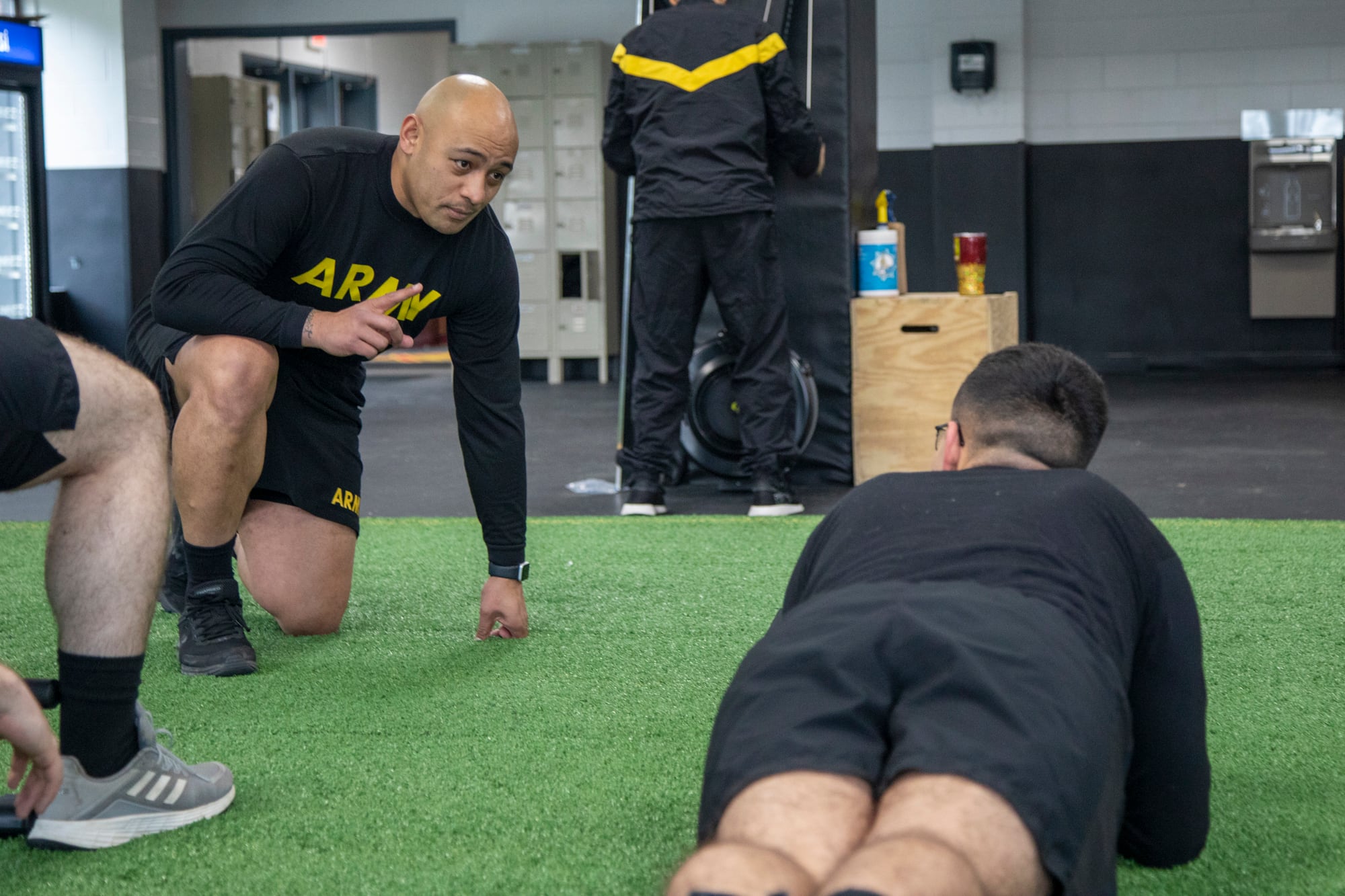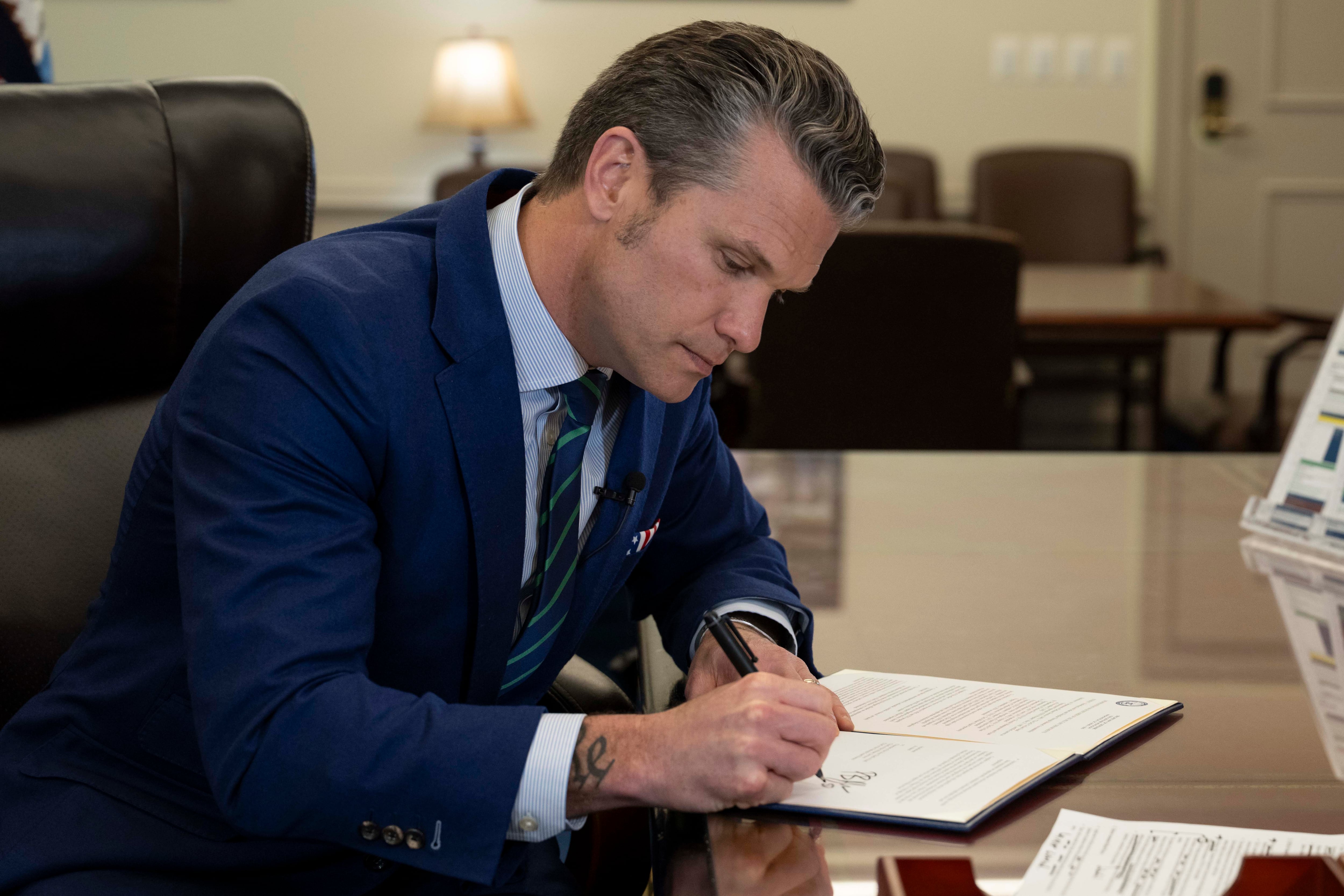FORT EUSTIS, Va. – An Army Reserve pilot program on the Army’s newest health and fitness program may provide answers for how both the Reserve and the Army National Guard can keep pace with their active-duty counterparts in this soldier readiness initiative.
The pilot program launched in August 2021 and runs through July, though officials are trying to extend the program to December for more data, said Col. John Shipe, the Reserve’s 81st Readiness Division deputy chief of staff for operations, plans and training.
Alarming numbers support the focus.
Shipe shared with an audience of more than 800 at the Army’s annual Holistic Health and Fitness Symposium on April 25 that as of the end of March, an estimated 12,500 reservists were non-deployable. That’s more than 7% of the entire force.
RELATED

Nearly two-thirds of those non-deployable soldiers were in that category for medical reasons.
Nearly half of all male Guard soldiers and 40% of female soldiers are categorized as overweight, one-quarter of those, both male and female soldiers, meet the definition for obese, said Brig. Gen. Robert Davis, deputy chief of staff for operations, plans and training for the Army National Guard, in a separate presentation.
One-quarter of female soldiers and nearly one-third of male soldiers are not meeting their resistance training standards, Davis said.
Fewer than half of all Guard soldiers meet their nutrition requirements. Less than half report seven or more hours of sleep per weekday night.
Beyond medical and body composition hurdles, the Reserve and Guard face their own obstacles to implementing the health program fully across its formations.
The dispersed forces make concentrating resources, such as facilities, equipment or the staff for each of the Holistic Health and Fitness (H2F) domains — physical, sleep, nutrition, spiritual and mental — its own problem, he said.
An estimated 43% of Reserve units do not have a trained master fitness trainer nor a master readiness trainer.
“We want to really focus on how to structure the staffing in the Army Reserve,” Shipe said.
Earlier in the day, Maj. Gen. John Kline announced initiatives to create additional skill and special qualification identifiers focused on the health program that could help relieve some of that staffing shortage.
The skill identifier would be an at home station, four-week course. The qualification identifier would require up to 12 weeks of training and focus on staff sergeant and sergeant first class ranks. Both recommendations are under review by Army senior leadership, Kline said.
The Reserve pilot program includes three cohorts pulled from two battalions with the 290th Military Police Brigade, labeled A, B and Control.
The A group received 9 monthly in-person H2F domain-specific education sessions, a three-day H2F summit event, a digital application with workouts, nutrition and mental health information that also connects with an H2F expert team. They also received a full-time H2F integration team and a ratio of one instructor for every 100 soldiers.
The B group received all the assets of the A group but the monthly education. The C group received no access to H2F pilot resources.
So far both A and B groups did better than C and A performed better than B.
That performance has translated into a decrease in body composition failures, lower limited duty profiles, improved non-deployable rates, improved marksmanship, improved Army Combat Fitness Test scores, better medical readiness rates and lower injury rates, Shipe said.
Rather than seeing the many facets of the Holistic Health and Fitness program as another task on a list, Shipe said Reserve leadership is using the data to show commanders how this program can help them accomplish their missions better because soldiers are healthy and performing at their best.
“We’re trying to approach this as a ‘readiness enhancer’ for commanders,” Shipe said.
Shipe’s remarks followed a presentation earlier in the day by Davis, the Guard’s deputy chief of staff for operations, plans and training, who shares many of the same burdens as his Reserve counterpart.
“How we implement is going to be different,” Davis said.
For example, the Guard has 2,700 sites spread across 54 states and territories. And many of the soldiers live in locations away from even those disparate installations.
So, Soldier Performance Readiness Centers, the hub of H2F for many of the active brigades at their home stations, won’t suddenly appear for Guard and Reserve soldiers to use.
That means that Guard and Reserve leaders will need to get creative, use technology and find novel ways to get health resources to their soldiers, officials said.
Todd South has written about crime, courts, government and the military for multiple publications since 2004 and was named a 2014 Pulitzer finalist for a co-written project on witness intimidation. Todd is a Marine veteran of the Iraq War.





